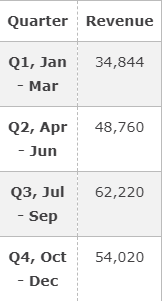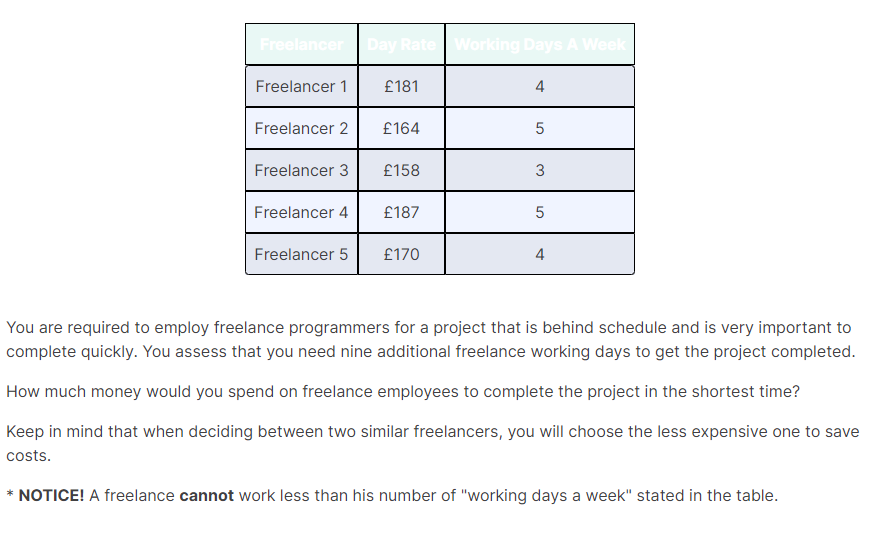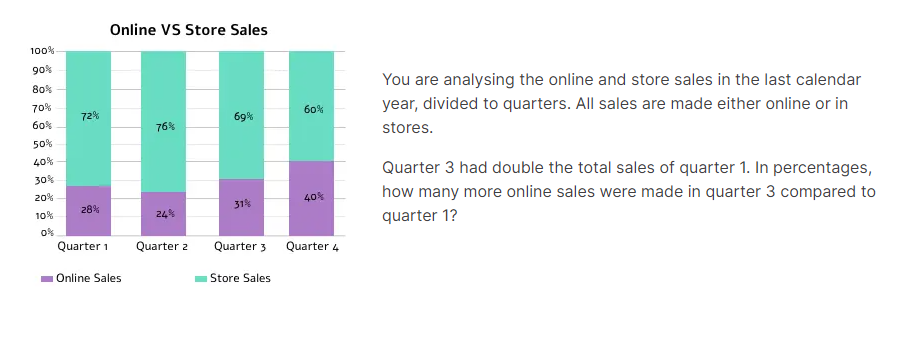 EY Numerical Reasoning Test
EY Numerical Reasoning Test
The EY Numerical Reasoning Test is part of the Tax, Assurance, and Technology service lines recruitment process at Ernst & Young.
The Numerical Reasoning test is designed to assess your calculation skills, which are crucial to securing a place in one of EY's Graduate programmes.
With our EY Numerical Reasoning Test preparation, you will gain all the necessary practice to ace the test. It includes:
- Full numerical reasoning simulations with Cappfinity-style questions that mimic the format of the real EY Numerical Reasoning test.
- Study guides focused on the different types of mathematical operations you will need to demonstrate on the test.
- Extra practice to sharpen your numerical skills and quicken your numerical analysing abilities.
Are you applying for EY's Tax or Consulting service lines?
You will also take the immersive EY One Assessment. Learn more about it in our One Assessment page.
The PrepPack™ Includes:
EY Numerical Reasoning Test Preparation
- 3 full numerical reasoning practice tests
- Extra practice
- 10 numerical study guides
What Is the EY Numerical Reasoning Test?
The EY Numerical test assesses your ability to understand, analyse, and interpret numerical information.
The test is provided by Cappfinity and is often taken together with the EY ONE Assessment.
You will be presented with numerical data in the form of word problems, tables, charts, and graphs, and you will be asked to perform calculations based on this information.
The question format varies, with some being multiple-choice while others are open-ended, which requires you to enter the answer manually.
You are allowed to use a calculator, pen, and paper.
You will have to answer 12 questions. There is no time limit, and the whole test typically takes about 20 minutes to complete.
The main difficulty of the EY numerical reasoning test lies in recognizing the specific inquiry, determining where to locate the necessary information, and discerning the relevant data for the calculations.
Let’s see some EY Numerical Reasoning Assessment sample questions!
Looking For Other Finance Tests?
HSBC | UBS | Bain & Co | Macquarie | Morgan Stanley | Barclays | EIB | Deloitte | Deutsche Bank | KPMG | PWC | Credit Suisse | Nomura | BCG | BNP Paribas | Jefferies | Summer Internships | Spring Week | Job Simulation
EY Numerical Reasoning Test Practice Questions
EY Numerical Reasoning Test Practice Question #1
You predict a 25% increase in revenue in the upcoming first quarter of the year, and a 10% increase in revenue for all other three quarters.
Assuming your predictions will be realised, what will be the smallest difference between any two quarters' revenues in the upcoming year?

First, calculate the new revenues according to the predictions:
• Q1, +25% = 34,844 * 1.25 = 43,555
• Q2, +10% = 48,760 * 1.10 = 53,636
• Q3, +10% = 62,220 * 1.10 = 68,442
• Q4, +10% = 54,020 * 1.10 = 59,422
The question asks for the smallest difference between any two revenues during a quarter. You can roughly tell that the closest revenues are Q2 and Q4.
Their difference is: 59,422 - 53,636 = 5,786.
The correct answer is '5786'.
EY Numerical Reasoning Test Practice Question #2

EY Numerical Reasoning Test Practice Question #3

Preparing for the EY Numerical Reasoning Test? JobTestPrep's tailored PrePack offers full simulations, study guides, and additional practice to help you to ace the test and secure your spot in the EY programme!
Are you applying for EY Australia? JobTestPrep is currently developing a preparation plan for the EY Australia Assessment – for more details, contact us!
EY Numerical Reasoning Test Tips
The EY Numerical Reasoning Tests poses a significant challenge to job candidates. Here are a number of tips to help you out:

Refresh your Basic maths
Review and strengthen your foundational math skills, including arithmetic, percentages, ratios, and data analysis. A solid grasp of these fundamentals will boost your performance on the test.

Analyse the Data
Before jumping into calculations, carefully analyse the data provided. Identify the key information, relationships, and patterns to make informed decisions and avoid errors.

Eliminate Wrong Answers
When faced with multiple-choice questions, eliminate obviously incorrect answer choices. In this way, you increase your chances of selecting the right option, even if you are unsure of the exact solution.

Track your time
Although there is no time limit, the test is recorded; this provides your recruiters with insights into the duration you take to answer each question.
EY Assessment Tests
EY offers several graduate programmes in a number of service lines: Assurance, Tax, Consulting, Law, Technology, and Strategy and Transactions.
Each service line has its own recruitment process that includes one or more assessment tests.
💡 Learn which tests you will be taking for EY below:
| Service Line | EY Assessment Tests |
| ✻ Assurance | Numerical reasoning |
| ✻ Tax | Numerical reasoning EY One Assessment |
| ✻ Consulting | Business consulting: EY One Assessment Technology consulting |
| ✻ Law | Technology is Changing Our World |
| ✻ Strategy & Transactions | Technology is Changing Our World |
| ✻ Technology | Numerical Reasoning |
FAQs
The EY Numerical Reasoning test assesses the calculation skills required in EY’s Tax, Assurance, and Technology service lines.
The test is provided by Cappfinity, and includes 12 multiple-choice and open-ended numerical questions.
The best way to prepare for the EY Numerical Reasoning Test is by refreshing your basic maths skills and taking as many simulation tests as possible.
JobTestPrep’s EY Numerical Reasoning test preparation is tailored specifically for this assessment, with f Cappfinity-style questions that mimic the actual test, as well as study guides and extra practice to help you ace the EY Numerical Reasoning test.
The EY Numerical Reasoning Test includes 12 questions. The test has no time limit, and it takes about 20 minutes to complete.
The EY Numerical Reasoning Test questions combine open-ended and multiple-choice questions. You will be presented with numerical information in the form of written text, graphs, tables, and charts.




